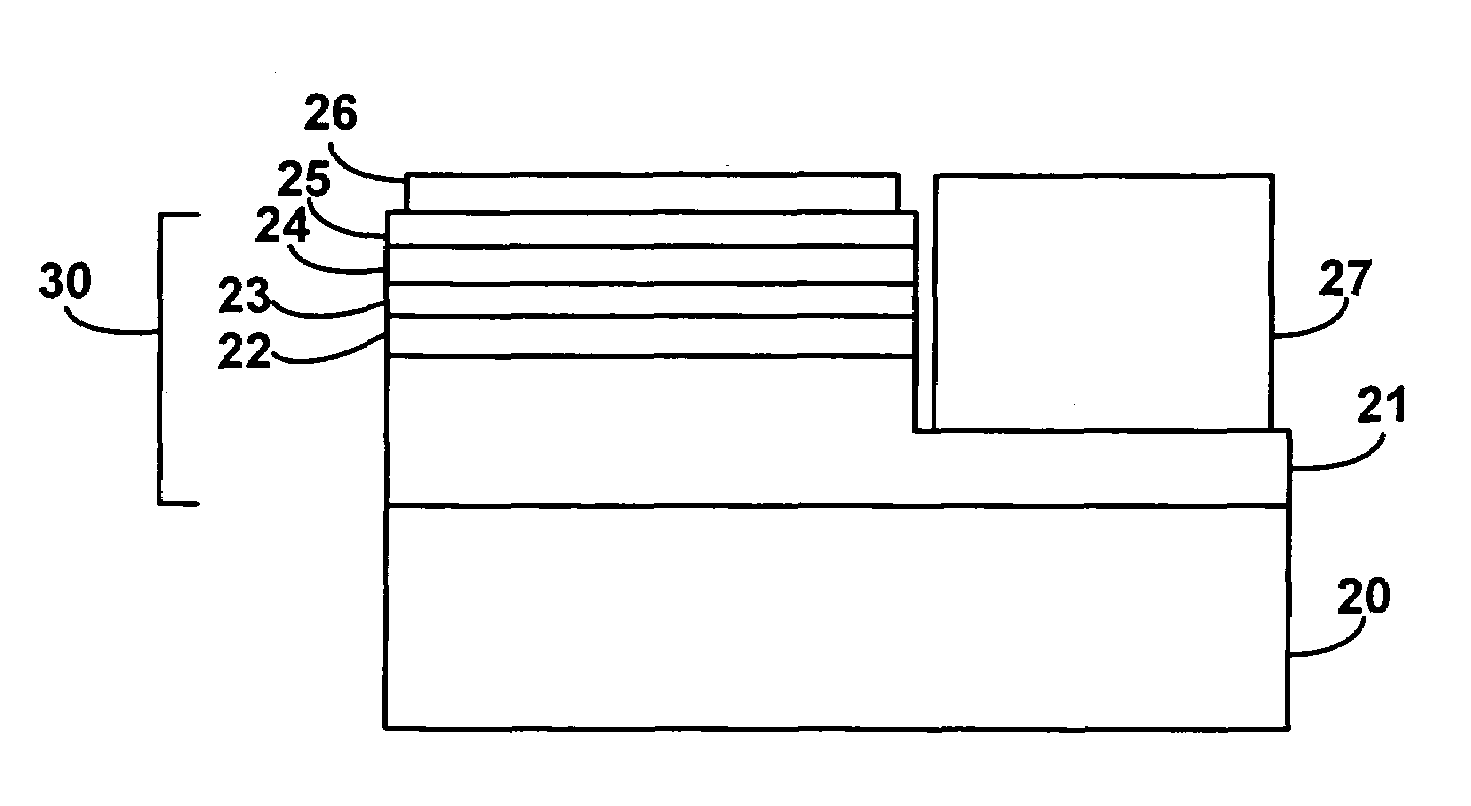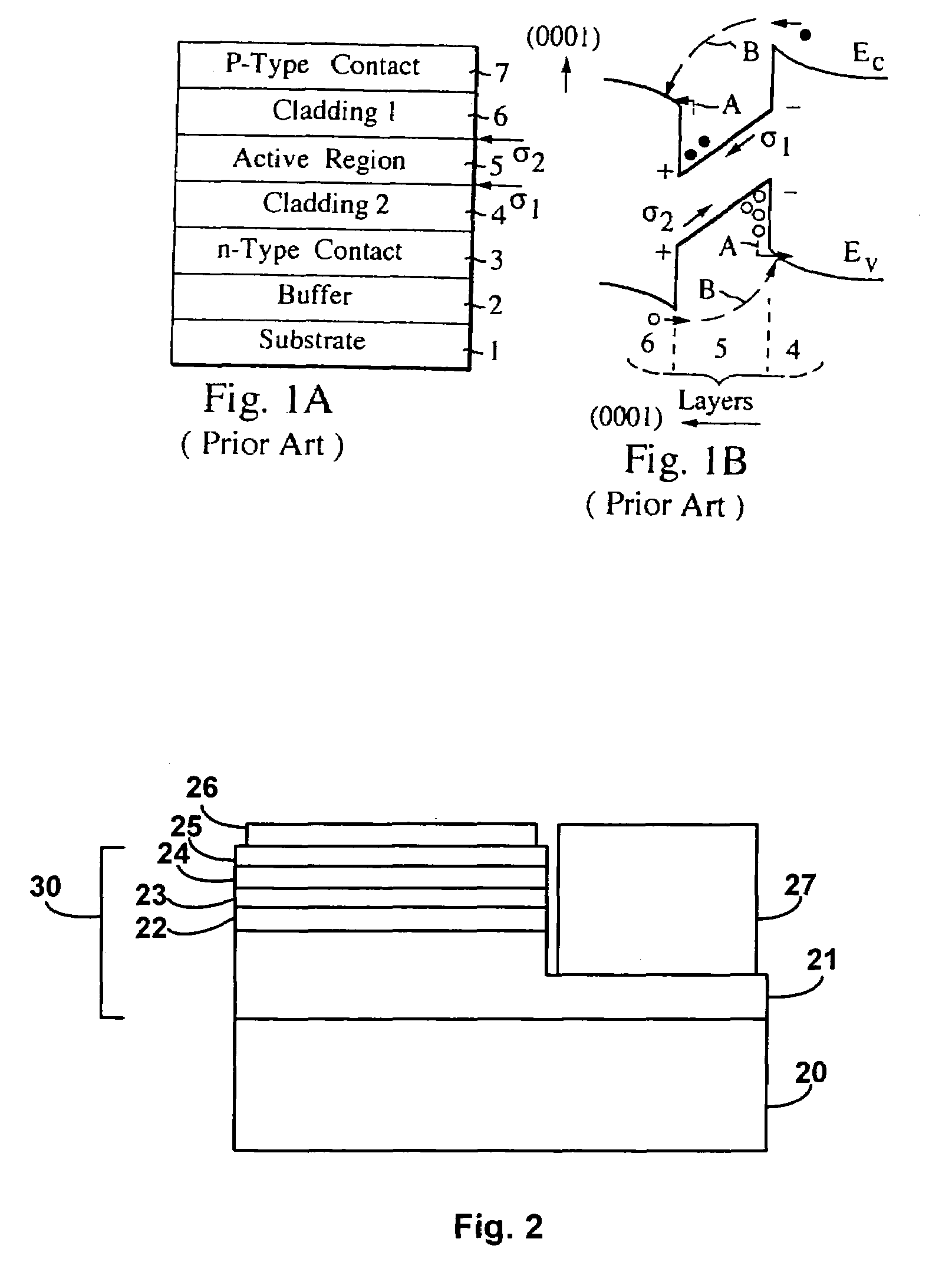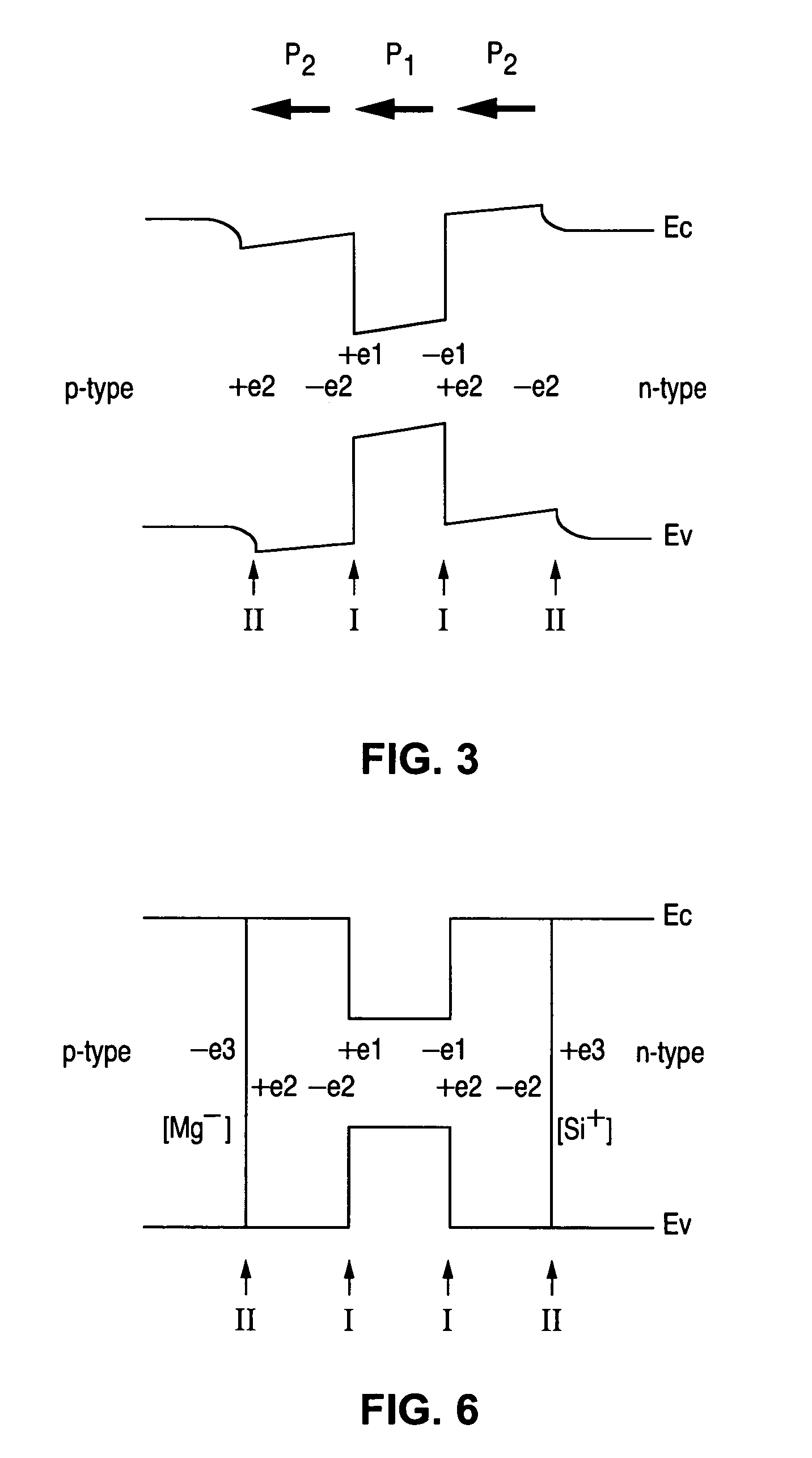III-nitride light emitting device with reduced polarization fields
a technology of polarization field and light emitting device, which is applied in the direction of semiconductor devices, basic electric elements, electrical apparatus, etc., can solve the problems of reducing efficiency, reducing probability, and reducing efficiency, so as to reduce polarization field and avoid inefficiencies caused
- Summary
- Abstract
- Description
- Claims
- Application Information
AI Technical Summary
Benefits of technology
Problems solved by technology
Method used
Image
Examples
Embodiment Construction
[0021]FIG. 2 illustrates a device according to several embodiments of the invention. An n-type region 21 is formed over a suitable substrate 20, usually sapphire, SiC, or GaN. Active region 23 is sandwiched between two spacer layers, an n-type spacer layer 22 and a p-type spacer layer 24. Active region 23 may be a single light emitting layer or may include one or more quantum well layers separated by barrier layers. A p-type region 25 is formed over p-type spacer layer 24. P-contact 26 provides electrical contact to the p-side of the active region and n-contact 27 provides electrical contact to the n-side of the active region. Two possible arrangements of the p- and n-contacts are described below in FIGS. 7–10.
[0022]In some embodiments of the invention, one or more of p-type spacer layer 24, n-type spacer layer 22, and the barrier layers separating the quantum wells in a multiple quantum well active region may be quaternary alloys of aluminum, indium, gallium, and nitrogen. The comp...
PUM
 Login to View More
Login to View More Abstract
Description
Claims
Application Information
 Login to View More
Login to View More - R&D
- Intellectual Property
- Life Sciences
- Materials
- Tech Scout
- Unparalleled Data Quality
- Higher Quality Content
- 60% Fewer Hallucinations
Browse by: Latest US Patents, China's latest patents, Technical Efficacy Thesaurus, Application Domain, Technology Topic, Popular Technical Reports.
© 2025 PatSnap. All rights reserved.Legal|Privacy policy|Modern Slavery Act Transparency Statement|Sitemap|About US| Contact US: help@patsnap.com



